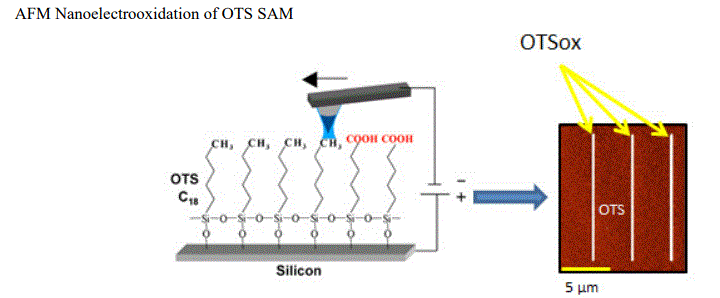International Nanotechnology Conference & Expo
April 04-06, 2016 | Baltimore, USA
Surface patterning of n-octadecyltrichlorosilane (OTS) self assembly monolayers: Constructive nanolithography
Weizmann Institute of Science, Department of Materials and Interfaces, Israel
Constructive nanolithography; a generic bottom-up fabrication technique, developed in our laboratory, capable of producing high resolution active surface features on the otherwise inert outer surface of self-assembled OTS monolayers, provides invaluable opportunities for the advancement of surface bound ultra-low dimensional electronics and surface bound macromolecular architectures. The recent fabrication of a quasi two dimensional electrolytic cell, facilitated by low humidity surface ionic conduction on pre-planned carboxylic acid nanowires, inscribed on the surface of OTS monolayersvialocal AFM probe electrooxidation, highlights the significance of this work. Unfortunately, concomitant partial monolayer destruction occurred with the oxidativetransformation of methyl functions to carboxylic acid during pattern inscription.3 However, our more recent results show that the outer surface of OTS can be locally oxidized () with humidities above 30 % and applied voltages of above -5.9 V; that is, the undesired oxidation of the underlying silicon substrate occurs only above -6.4 V, at minimum set-point, where the height of the resulting silicon oxide increases linearly as does the dimensions (width in the case of lines)of the inscribed features. Voltages between -6.1 to -6.4 result in no oxidation of the substrate, in addition to accurate and continuous surface patterns. Highset-points (> 0.4 nA) result in lateral broadening of the water meniscus, adsorbed to the surface of the AFM probe, hence, there is broadening of the inscribed patterns and increased oxidation of the underlying substrate. Competition between the kinetics of water adsorption to the probe and that for the combined consuming processes: evaporation and reaction, result in discontinuous patterning at high inscription rates, ca.>1 µm/s; that is, the overall consumptionrate becomes greater than the former at this speed. Indeed, the aforementioned conditions can be reproducibly used for the generation of high resolution surface patterns (lines) with dimensions (widths) below 35 nm using a 40 nm (Probe radius) inscription probe. After pattern inscription, contact and semi-contact measurements, using high resolution probes under low humidity conditions, must be combined to obtain accurate imaging, facilitating reliable dimensional analysis. High resolution localized oxidation of the OTS monolayer surface is described by a minimal difference between the friction of the pattern on trace and retrace. These patterns are highly sensitive to moisture, resulting in local variation of surface frictional forces, hence, measured pattern dimensions are moisture sensitive.

Biography:
Dr. Peter N. Nelson Completed his A.Sc., (2007) in Chemistry and Biology from the College of Agriculture, Science and Education (C.A.S.E) followed by his B.Sc., (2009) in general chemistry and Ph.D (2013), in physical chemistry, from the University of the West Indies, Mona. His PhD work was focused on adducing the molecular structures and phase properties of some solid state anhydrous metal carboxylates. This work was carried out under the guide of Professor Henry A. Ellis; one of the founding fathers of that area. He is now a postdoctoral fellow at the Weizmann Institute of Science (WIS) in the department of Materials and Interfaces. His work at WIS, under the guide of Professor Jacob Sagiv; the father of Molecular Self Assembly, is focused on nanofabrication via AFM and e-beam lithography. Currently, his research interests include, but are not limited to, thermodynamics, Quantum dots, nanoionics and AFM lithography.


